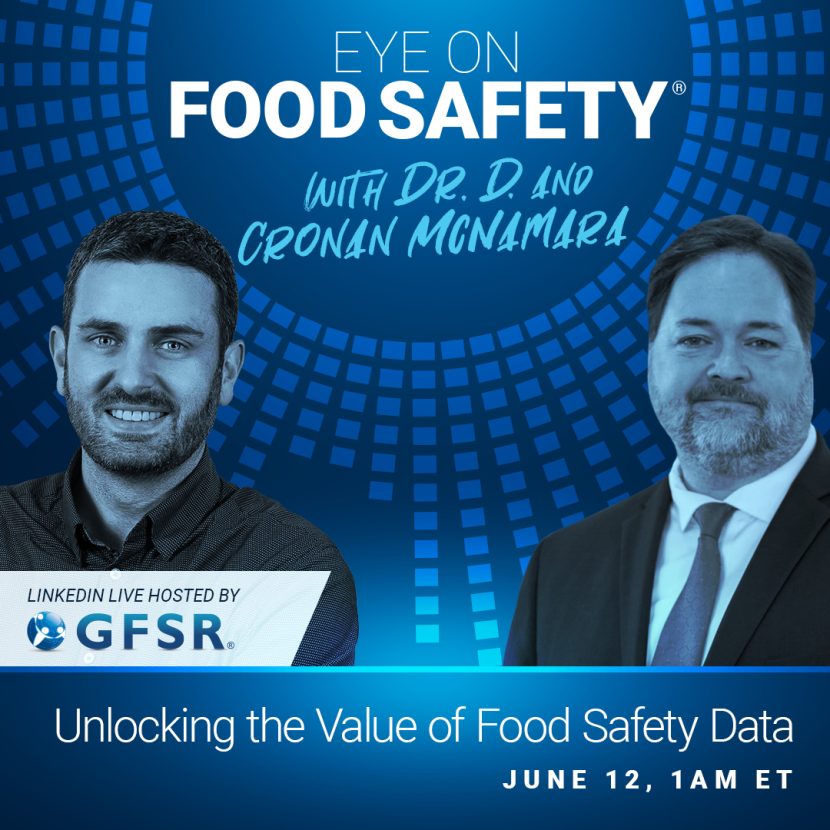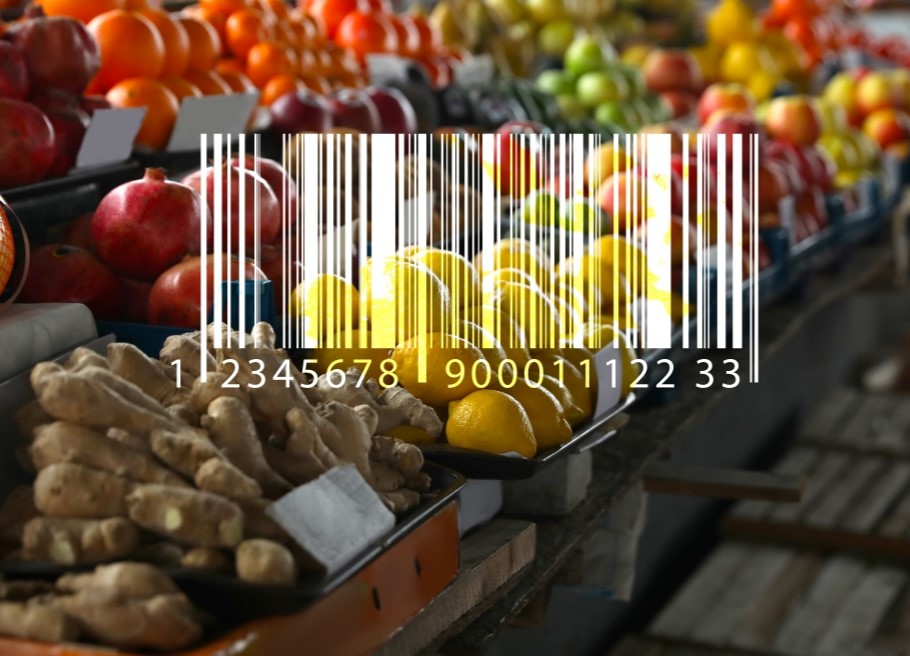Building a Culture Around Food Safety Data: Key Takeaways from Cronan McNamara
Transcribed from the Eye on Food Safety with Dr. D Podcast
In the June 2024 episode of the “Eye on Food Safety with Dr. D.” live video podcast, host Dr. Darin Detwiler engaged in a compelling discussion with Cronan McNamara, founder of Creme Global, delving into the vital role of food safety data.
McNamara shared insights from his extensive career and the conversation spanned the journey of implementing effective food safety data systems, the integration of machine learning, and the critical importance of leadership buy-in.
Through real-world examples and expert analysis, McNamara and Detwiler highlighted the transformative potential of a data-driven approach in the food industry, emphasizing that those who harness this potential will lead the way in ensuring food safety and quality.
McNamara described how he first got involved in food safety data more than 20 years ago: “I met a professor who was working on an EU risk project called Monte Carlo where we were applying advanced mathematical methods to food safety. So, I thought that it would be an interesting thing to work on for a few years.”
This led McNamara to found Creme Global, a data science company focused on food safety.
“We have a very much, you know, a scientific approach to data and analytics, and we have developed a number of models in house that we’ve deployed our own computing platform on Amazon,” he said.
Detwiler and McNamara discussed the journey of food safety data, from collection through analysis, and emphasized the importance of gathering data early in the supply chain.
“You can’t just rely on a few small tests at the port to kind of compensate for lack of transparency or data sharing that’s not happening along the earlier part of the chain.”
McNamara highlighted the value of data trusts or portals that allow organizations to share data.
You can’t blindly follow these machine learning algorithms, you have to use your own intuition.
“We’re allowing organizations or members to have a larger group to perhaps share data in a semi-structured or structured way. And then aggregating all of that data so that we can gain insights either just through visual analytics, or using more advanced methods like machine learning,” he said.
The conversation then explored three levels of data maturity in food safety:
- Collecting data but only reviewing after incidents
- Real-time data visualization
- Predictive analytics
“The second phase of really bringing their data to life in real time and visualizing it, and then starting to work on those little predictive elements and showing building trust in the predictive capabilities of the system, I think is really where we need to get to,” McNamara said.
The role of machine learning was discussed, with McNamara cautioning: “You can’t blindly follow these machine learning algorithms, you have to use your own intuition. And look at the data yourself and double check that you’re not going to just blindly follow the predictions of a machine.”
This is also why companies that are implementing systems to leverage food safety data need to hire staff who have expertise beyond the traditional IT team.
“We have good scientists, good data scientists and IT engineers. Right, so we have a kind of multidisciplinary team that can help. If we don’t, you know, know, your manufacturing environment at the start, we learn as quickly as we can,” McNamara said.
Of course, when implementing a quality system for food safety data, it’s critical that company leadership sees it as a priority.
“This data is at your fingertips. Other companies are using it, the government’s going to be using it, you need to be able to converse … in a way within your industry on a database approach. And if you’re not, you’re going to be looking a bit like you’re lacking in your food safety endeavors.”
On ensuring there is adequate funding, tech and qualified staff to support food safety data initiatives, McNamara noted that “you don’t need to spend a fortune on tools these days with the open-source technologies that are out there, and Amazon’s cheap cloud computing capabilities. But it does take a bit of expertise to put those together.”
And there are benefits to be had, including cost savings and improved risk management.
McNamara gave an example: “We’ve been working on with a few companies to gather data along that process and try to see if we can predict sensory and safety and physical parameters, chemical parameters of the finished product right from the start, and then tweak a few knobs in the production process to save time, save money without compromising on any of that.”
Overall, the conversation highlighted the critical importance of food safety data in today’s food industry. While there are obstacles to fully leveraging this data, including leadership buy-in and prioritization, the potential benefits in terms of improved safety, cost savings, and risk management are significant. As the industry continues to evolve, those who can effectively collect, analyze, and act on food safety data will be best positioned to succeed.
This conversation, and all the previous episodes of Eye on Food Safety with Dr. D., are available for listening on Apple Podcasts and Spotify, and video recordings of the live event can be viewed on demand with a Premium Subscription from GFSR.

-
 FeaturedRisk management
The Cost of a Breach: What a Cyberattack Could Mean for Food Safety Recalls
FeaturedRisk management
The Cost of a Breach: What a Cyberattack Could Mean for Food Safety Recalls
-
 FeaturedRisk management
Securing the Food Chain: How ISO/IEC 27001 Strengthens Cybersecurity
FeaturedRisk management
Securing the Food Chain: How ISO/IEC 27001 Strengthens Cybersecurity
-
 FeaturedRisk management
Revolutionizing Food Safety Training: Breaking Out of the “Check-the-Box” Mentality
FeaturedRisk management
Revolutionizing Food Safety Training: Breaking Out of the “Check-the-Box” Mentality
-
 GFSI Standards
GFSI 2025: Building Trust, Tech-Forward Solutions, and Global Unity in Food Safety
GFSI Standards
GFSI 2025: Building Trust, Tech-Forward Solutions, and Global Unity in Food Safety
-
 FeaturedFood Safety
Integrated Pest Management: Strategies to Protect Your Brand’s Reputation
FeaturedFood Safety
Integrated Pest Management: Strategies to Protect Your Brand’s Reputation
-
 FeaturedFood Safety Culture & Training
No Open Door Policy: Challenges That Impact Pest Control in Food Processing Plants
FeaturedFood Safety Culture & Training
No Open Door Policy: Challenges That Impact Pest Control in Food Processing Plants




